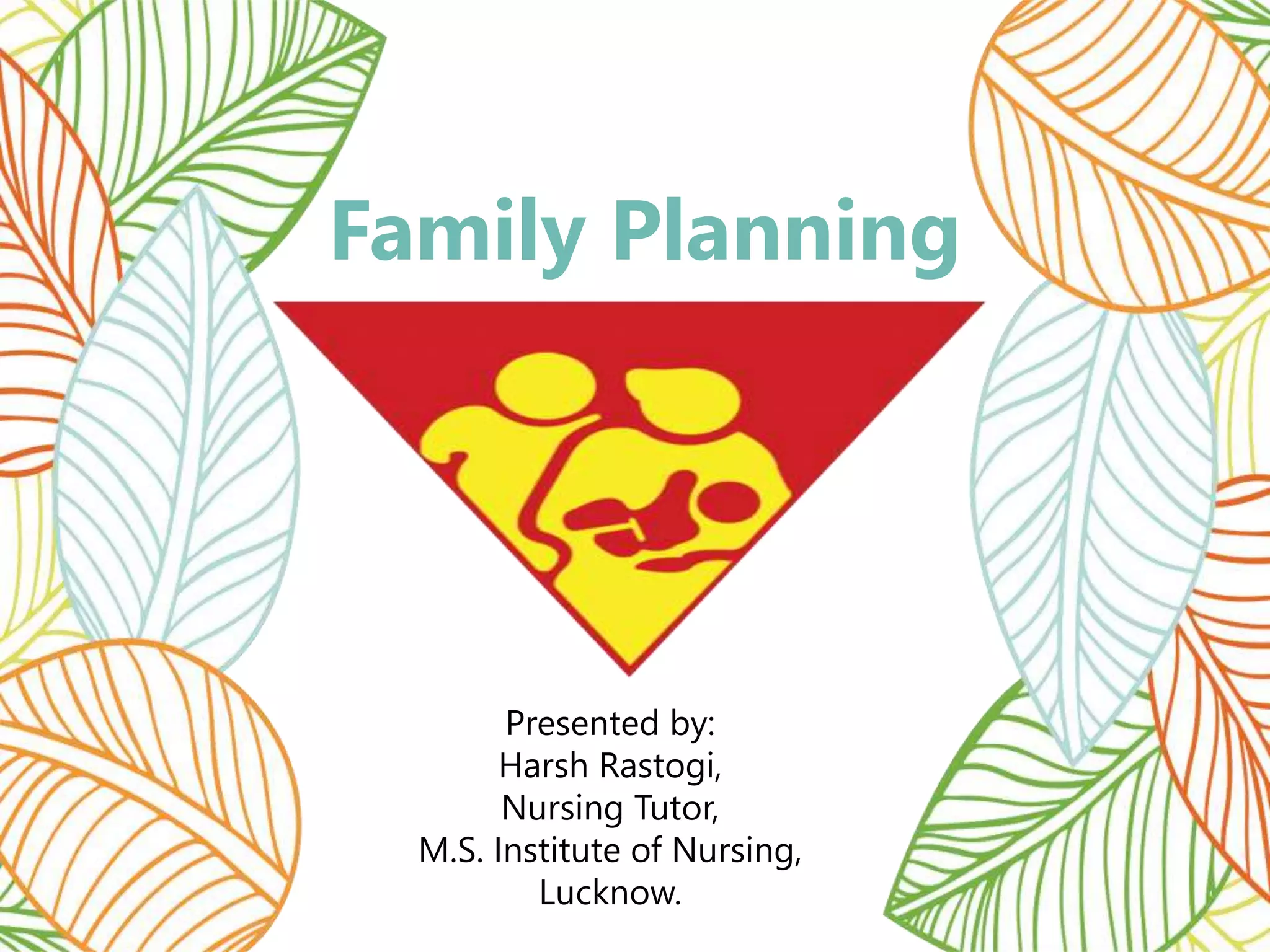The document discusses the definition, scope, and health aspects of family planning, emphasizing its recognition as a basic human right by various international conferences. It highlights the importance of family planning in promoting maternal, fetal, and child health, and in managing the number and timing of pregnancies to reduce health risks. In India, significant achievements in family planning include a decline in fertility rates and the promotion of a 'small family norm' to stabilize the population.









































